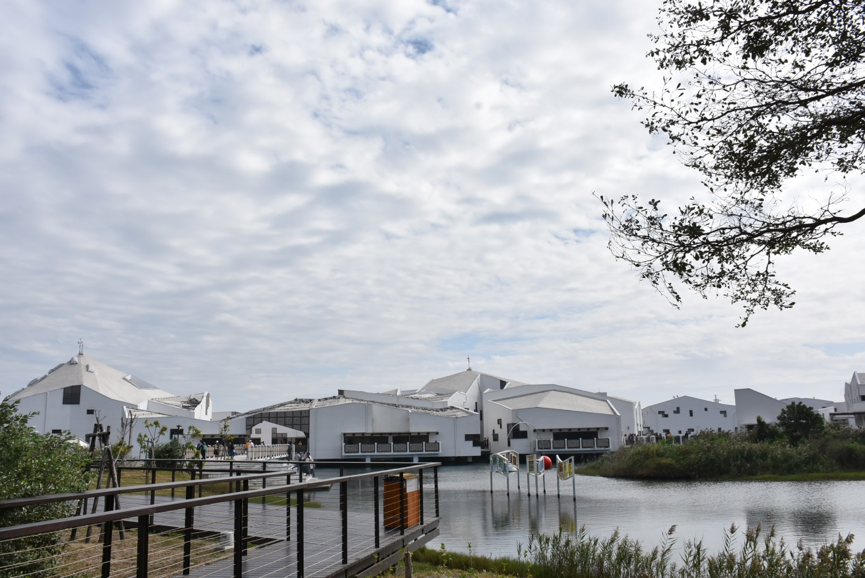

-
- 111th Academic Year
- The Avenue of NCKU Heritage – Area of Cultural Assets
- The Avenue of NCKU Heritage – Area of Environment and Ecology
- From country to city: Taveron and Han integration
- Kyrie: Pestilence and faith in the salty area
- Highlighting Western Chu-Wei
- Ginza: Commercial tracks from harbors to modern streets
- Tavocan and the Town of Hills
- The Museum: Ecological village and eco-museum
- The Stories about Major South Gate of Fu-Chen (Tainan)
- Modern new generation
- 110th Academic Year
- The Route of NCKU Students - The Cultural Assets Area
- NCKU Students' Route – Area of Cultural Assets
- Migration and Settlement of the Siraya Tribe
- Zengwen Creek’s nine bends and 18 turns, with astronomy, hydrology and humanities
- Exploring the Old Industries of Tainan City
- Journey of Beauty
- The Narrations of Water Resources, Agriculture and Livestock Industries
- Exploring Old Yuejin Harbor Area
- Lâu-Nuā Sió Sai Kha
- Highlighting Western Chu-Wei Area, Yu-Ler Street & Eastern Gate
- 109th Academic Year
- NCKU Students' Route – Area of Cultural Assets
- NCKU Students' Route – Area of Environment and Ecology
- Migration and Settlement of the Siraya Tribe
- Old Taijiang Inner Sea: Its Previous and Current Existence
- Lâu-noā Sió-sai-kha
- Exploring the Old Industries of Tainan City
- The Exploitation of the Works of Nature-Journey about The Frost and The Flower of Salt
- Badlands and the Mountain City
- Age-old Stories from the South of the City
- The Magnificent of Zheng-Xing Street
- 108th Academic Year
- The Route of NCKU Students─The Cultural Assets Area
- NCKU Students' Route – Area of Environment and Ecology
- Ecology of Fishery and Sea Salt Harvesting─ The Nature and Culture of Tai-Jiang Lagoon
- Migration and Settlement of the Siraya Tribe
- Age-old Stories from the South of the City
- Exploring the Old Industries of Tainan City
- The Narrations of Water Resources, Agriculture and Livestock Industries
- Technology and Humanities Science Park and Cultural Archeology
- From Kū-Lâu to Sin-Lâu Hospital
- Folk Delicacy around Minor West Gate Area
- 107th Academic Year
- The Avenue for NCKU Students
- Exploring Old Occupations in Tainan
- Secret Literary Path of Tainan
- Migration and Settlement of the Siraya Tribe
- Old Tai Jang Inner Sea: Its Previous and Current Existence
- Five-Canal Harbor Area: The Water Gods and Import-Export Tradesmen
- Tradition and Innovation: Zhengxing Street and the Grand Market(Da Caishi)
- The Water Resource of Tainan Area
- The Grace of Yanshui Harbor: Rejuvenation of Yanshui and Hopi Settlements
- 106th Academic Year
- The Avenue of NCKU Students
- Gate of Urn-Shaped Castle and the Stony Plates
- Siraya People’s Migration and Their Journey to Settlement
- Zeelandia and the Retrospective Anping
- Old Taijang Inner Sea (Taijang Nei Hai ) : Its Previous and Current Existence
- Tradition and Innovation- Zhengxing Street and the Grand Market (Da Caishi )
- Qing Dynasty Government Official’s Trail-Chunan Old Street and Zhenbei Fang
- Five-Canal Harbor Area, the Water Gods and Import-Export Tradesmen
- Fantastic Trips to Know Sugar and Salt production
- Chikan Park Area and Historical Traces
- Secret Garden of Literature- From Taiwan Administration (Taiwan Fu) to Tainan Prefecture Hall (Tainan Zhou Ting)
- The Water World of Tainan Area
- 111th Academic Year
-
-
-
Old Taijiang Inner Sea: Its Previous and Current Existence
Route Introduction

Taijiang National Park
Environmental Conservation The sound of waves from the mouth of Zengwun Creek, west to the border
Zengwun Creek, mother river of Jia-Nan Plain, flows through the westernmost part of the country. Walking under the tree canopies in the ocean breeze, we seem to have heard the whisper of the ocean and the echo of the development of Taiwan history.
Zeng-wun Creek originates from Mt. Dongshui under Jade Mountain and flows into the Taiwan Strait between An-Nan District and Ci-gu District. This area was called Callewangh in the 17th century. Japanese, Fukienese and the indigenous people conducted fishing and trade here. It's also the scene of the first naval battle ever recorded with words, when Shan Yu-junn led soldiers from the Ming Dynasty and defeated the Japanese at Callewangh. Today, centuries later, bountiful ecological resources and hundreds of species of fish and shrimps gather around the river mouth. Whales and dolphins cruise around near the bountiful wetlands within the sights of mangroves, is a habitat of Taiwan osemia hoppoensis, a unique species from Taiwan.
Taijiang National Park exercises its main focuses on "cultivating wetlands of biodiversity", "history of emigration and settlement" and "fishing and salt industrial cultures". This is the first new-generation national park brought into being elevated from the level of the people to the government, which witnesses how people in Taijiang strive to preserve the historical and ecological environment through the setting up of a national park and their spirit in protecting the life and the environment. The management office is built with the design of "Taijiang as a School" – with propped-up bamboo bungalows and Taijiang-styled courtyards. The building seems to float on the water and mist amongst the water plants. It is classified as diamond-level green architecture.
-